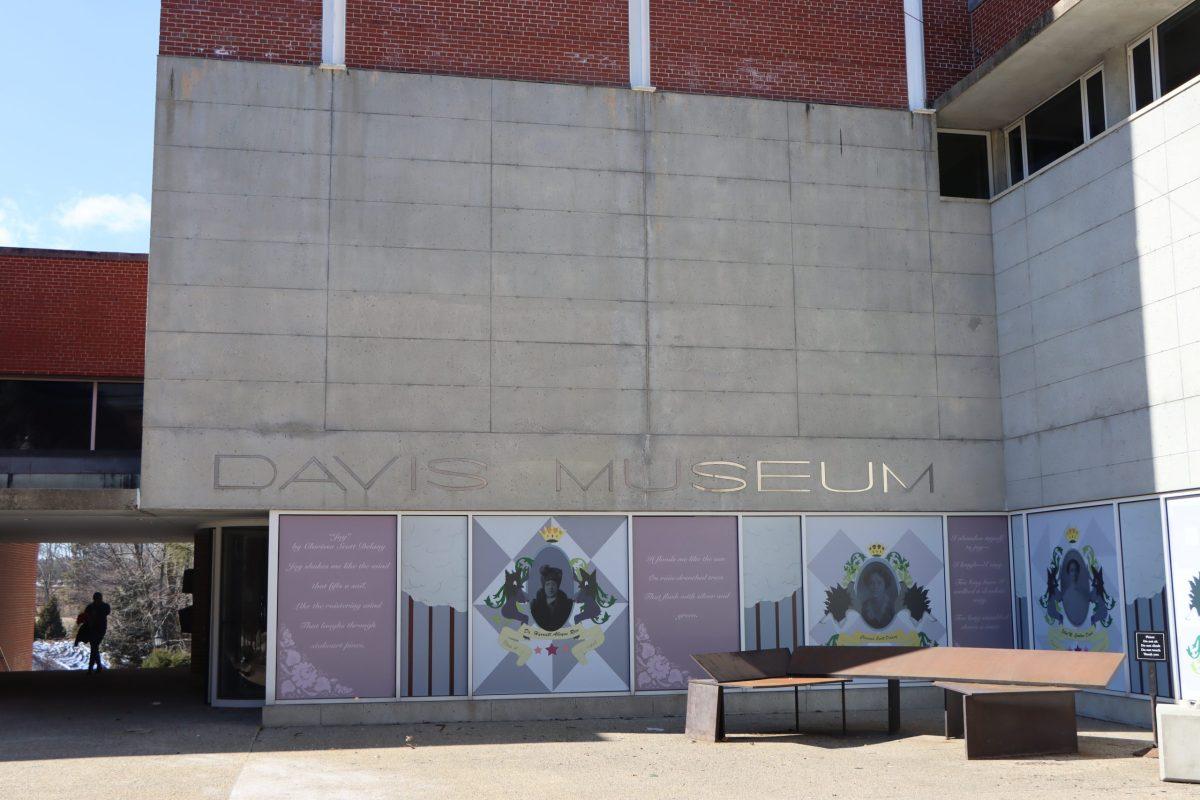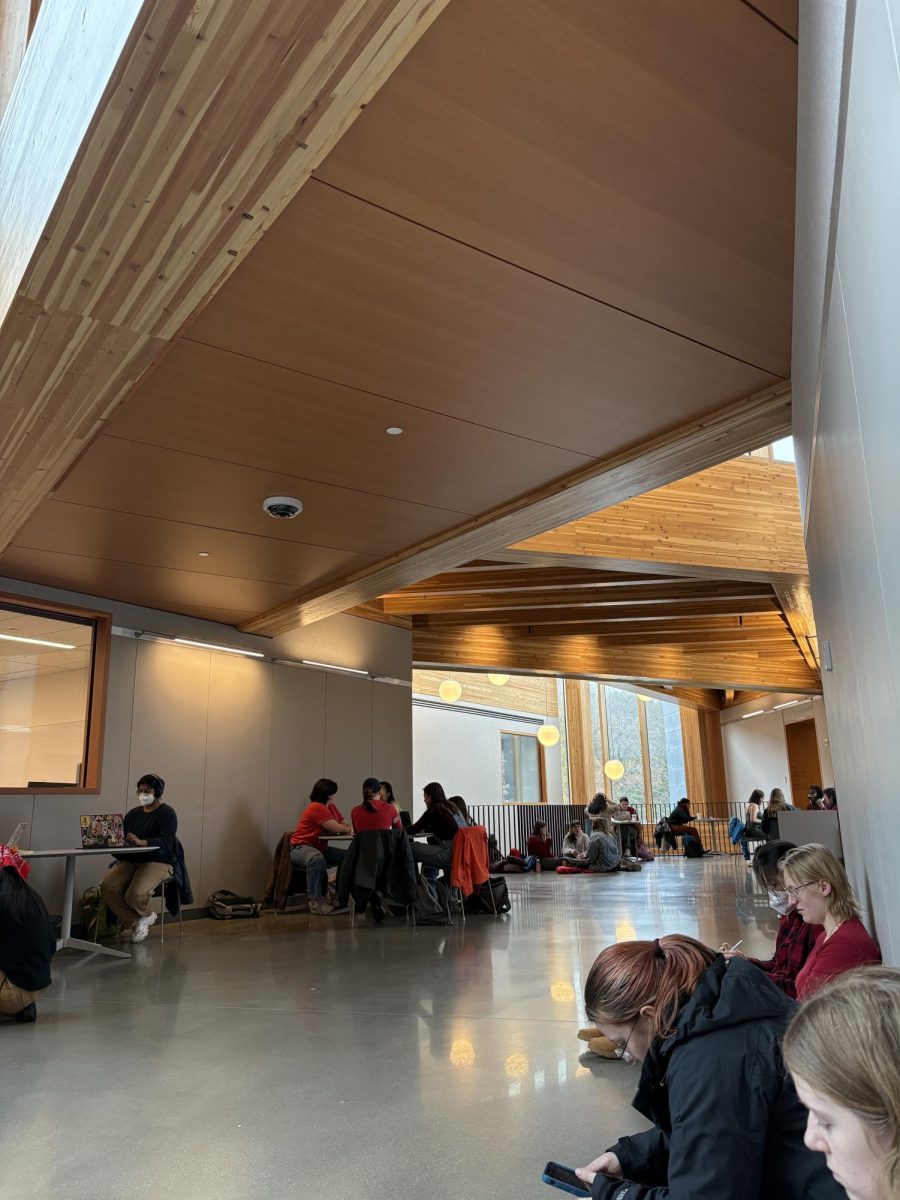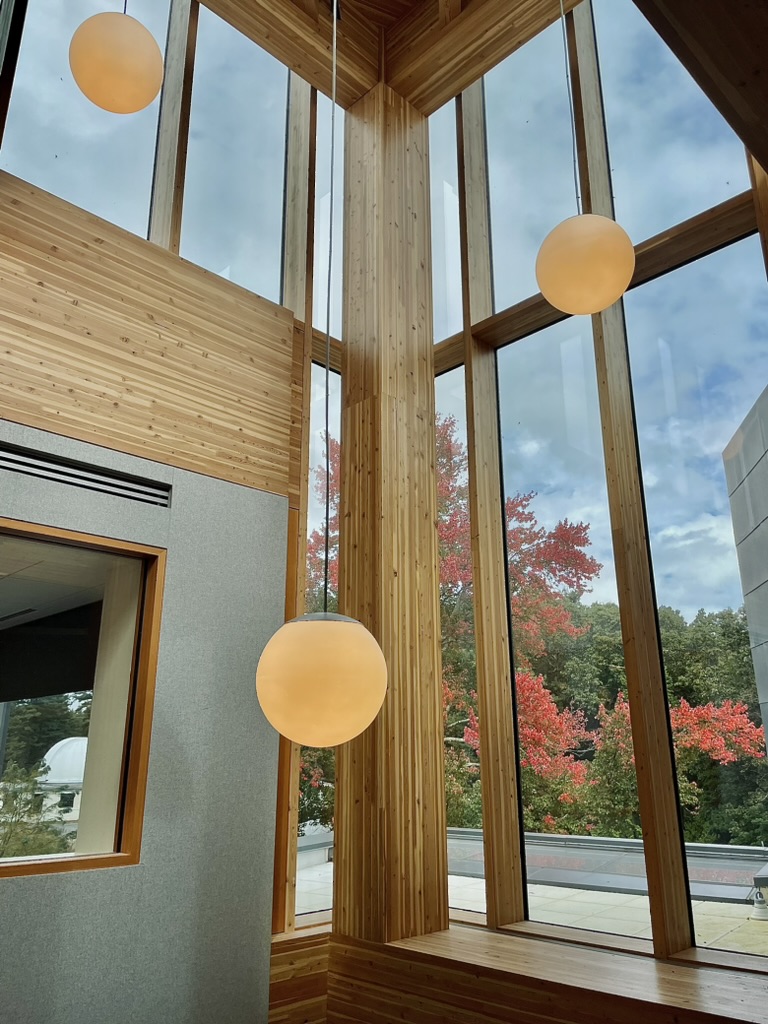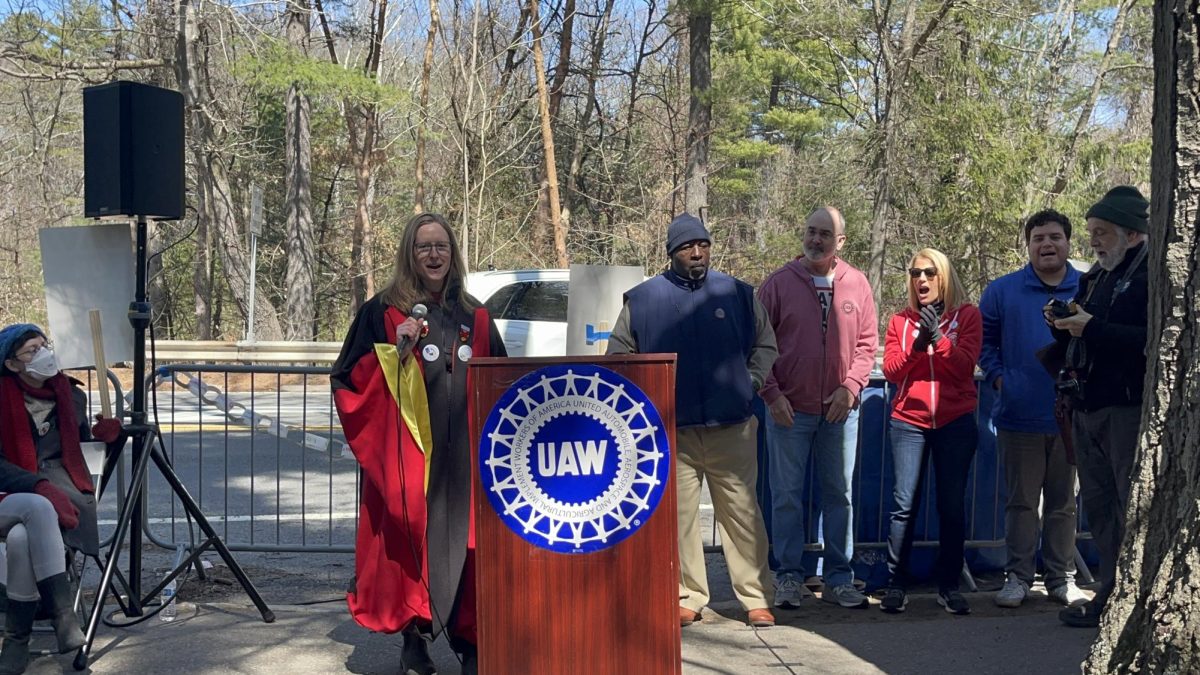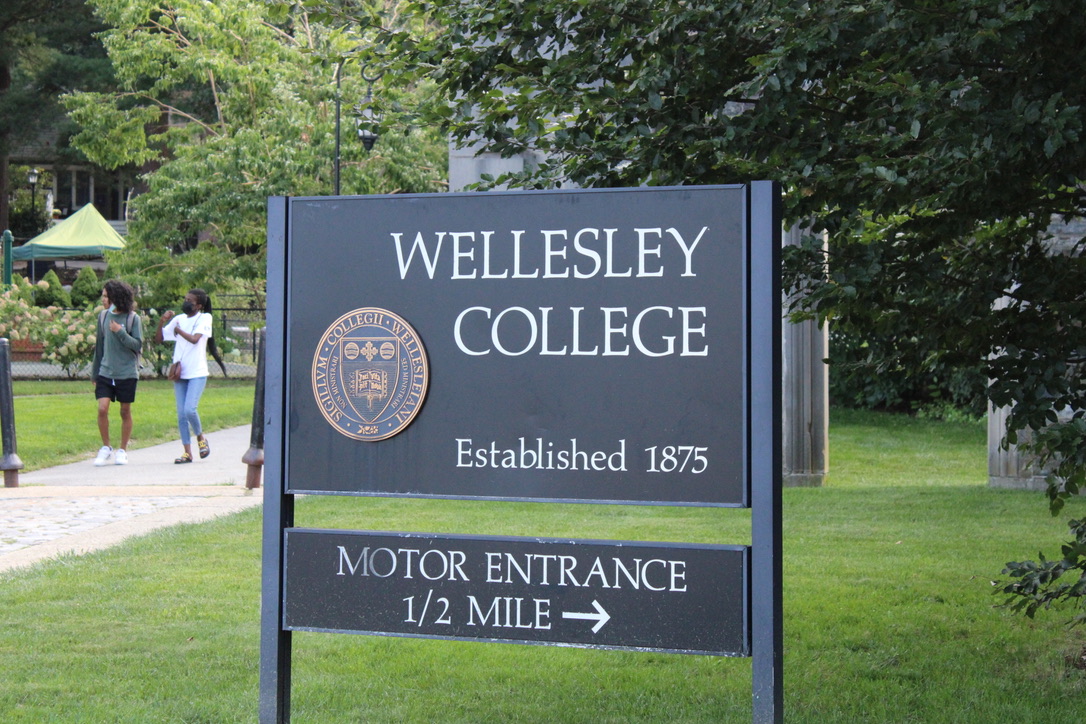Wellesley College announced that as of March 8, 2022, the Davis Museum will be open and accessible to the public with proof of vaccination and proper masking. For many Wellesley students, the reopening of the Davis will be their first time engaging with the campus museum located in the Academic Quad.
While the Davis Museum has served as both a public draw and a critical learning experience for students interested in art history, anthropology and museum studies since its opening in 1889, its collection history is not without controversies.
Most recently, several artifacts in the Davis collection have come to the attention of students because they originate from the Benin Kingdom in present-day Nigeria.
According to the a New York Times article from Nov. 5, 2021, Benin City and the Nigerian government have wanted the return of Benin Kingdom artifacts for decades. The artifacts that the Davis possesses, titled “Idiophone in the shape of an ahianmwen-oro” (Bird of Prophecy), “Figure of an Oba” (king) and “Tusk for memorial altar to Oba Osemwende,” are a part of a greater collection of over 3,000 artifacts colloquially known as the Benin Bronzes. All three artifacts date back to the 19th century and originated from the Royal Court of Benin in Benin City, Nigeria.
The artifacts in question were gifted to the Davis Museum from private collectors in the 1950s. The Davis was originally founded as a collection of both authentic and reproduced works of art and photographs so that Wellesley students would be able to learn art history to the best extent possible; the collection of the Davis continued to expand, but this expansion was particularly characterized by donations from private collectors. The lack of provenance, or history of an artifact, can often create sticky situations for museum curators trying to determine if an artifact was obtained ethically.
“Museums typically acquire historical artifacts through a donor or dealer, who doesn’t always know or reveal the full history of how the object came into their possession,” Archaeologist and Wellesley Professor Bryan Burns said. “Without documents proving where an object was found, or when it came into the art market, museums can choose to believe that it has a more benign history.”
Riya Balachandan ’24 expressed her frustration with the Davis’ housing of the Benin kingdom artifacts.
“I feel like [having the Benin Kingdom artifacts] is very disingenuous, because the school because of the school’s identity as a [historically white institution] in conflict talking about, I feel like there’s a general attitude, from administration and students that we’re kind of uprooting the status quo in some ways.”
Dr. Amanda Gilvin, the senior director of collections and assistant director of curatorial affairs at the Davis Museum, discussed the Benin Kingdom artifacts the Davis currently houses and how the Davis is rethinking the way it depicts the artifacts’ history. Gilvin specializes in African and African diaspora arts and has been working at the Davis since 2017. She discussed the presentation of the Benin Kingdom artifacts in the gallery, and how the Davis is navigating the broader call for the return of the artifacts.
“I wrote [the exhibit text about the Benin Kingdom] in 2017. It’s very frank about the colonial history of how African art as a canon came to be defined in North America, and the specific cases of the Benin Kingdom artwork,” Gilvin said. “That has been really important as a way of being transparent, and reckoning with the colonial history that impacts all of us.”
The exhibit text, which describes both the rich history of the Kingdom of Benin and the infamous British raid of the city in 1897, is in need of an update according to Gilvin in order to more accurately portray the colonial context through which many Benin kingdom artifacts have been obtained.
In November 2021, the Smithsonian Institution announced that it would be removing its Benin Bronzes from display as a first step in the process of repatriating the artifacts, or returning them to their cultural contexts. The process of repatriation can be both long and complex but will ultimately allow artifacts to be reunited with their original cultural contexts.
“There are cases where a museum makes a deal to return artworks without even telling the curators responsible for the collection, and the object is packed up and flown off within a week,” Burns said. “But, more often, an institution makes a statement that they’re going to investigate the situation around a controversial piece, and takes time to evaluate legal obligations while also assessing public opinion.”
The Davis is no stranger to the repatriation process. The Native American Graves Repatriation Act of 1990 is a federal law that states that funerary objects, remains and items of cultural significance pertaining to Native Americans must be returned to their group of origin.
According to the Davis museum website, “as of August 23, 2017, the Davis has sent ‘Invitation to Consult’ letters to 130 NAGPRA representatives across 14 tribes and nations,” meaning that the museum has invited tribes and nations to investigate artifacts in order to decide whether or not they should be repatriated.
Additionally, as of the writing of this article, the Davis has achieved “full NAGPRA compliance,” meaning that the Davis does not house artifacts that have previously been the source of NAGPRA-related disputes.
Repatriation of the Benin Bronzes requires international legal action on behalf of the parties claiming the artifacts to be theirs. In the case of the Benin Bronzes, this would mean that the Nigerian government or another institution would have to take legal action in an attempt to reclaim the Benin Bronzes from the Davis.
Balachandran also discussed her discomfort with the Davis’ lack of action regarding the Benin kingdom artifacts situation, despite the lack of international legal action.
“So many of these countries that have art that was stolen from them or post colonial states, and may not have the funds to take care of these works because of their histories of being stolen from by these colonizer states,” Balachandran said. “It’s not enough to just return the work. Another important part is to provide financial compensation for the use of the work for so many years.”
The call for the return of the Benin Kingdom artifacts is complicated by the murkiness of to whom they should be returned. According to a BBC article from July 22, 2021, an internal dispute between the Edo state governor, Godwin Obaseki, and the current oba, Ewuare II, who each have their own differing desires for the Benin kingdom artifacts. This dispute has complicated the process of returning Benin Bronzes and other artifacts in both Germany and Britain, which have national museums that previously displayed looted artifacts from Benin.
In fact, the Davis is not the only institution navigating the repatriation quandary. The Smithsonian Institution Museum of African Art and the Museum of Fine Arts (MFA) in Boston have similarly housed artifacts belonging to the Benin Bronzes collection. While a New York Times article from November 2021 said the Smithsonian has begun the process of removing the Benin Bronzes it possesses from exhibits, a Boston Globe article from the same month said the MFA remains firm in its display of the Benin Bronzes.
The MFA’s lack of action can partially be attributed to UNESCO best practice conventions that were established to create international standards for curatorial collections. The UNESCO Convention on the Means of Prohibiting and Preventing the Illicit Import, Export and Transfer of Cultural Property of 1970 states that “for objects inventoried and stolen from a museum, public or religious monument, or a similar institution […] parties should undertake appropriate measures to seize and return any cultural property stolen and imported.” However, the convention only applies to artifacts that were obtained by an institution after 1970, leaving many artifacts unreturned yet compliant with the UNESCO standards. This is why the MFA retains many of its otherwise disputed artifacts.
Curators and archaeologists alike are looking to update these practices to better represent the provenance of artifacts while also allowing people from around the world to learn about art from different cultures.
“My colleagues and I are currently participating in multiple efforts to shape new best practices for museums specifically regarding collections of historic African art in North American museums,” Gilvin said. “We need more comprehensive policies to help us assess what responsible stewardship of these objects will be going forward … because then what happens to other objects that we know were taken in illicit colonial warfare?”
To begin the collaborative process, Gilvin believes that establishing a digital database of African art is crucial so that curators and cultural groups in Africa can easily identify cultural objects of interest.
“Curators at museums and [in] kingdoms [in Africa] should have the opportunity to request what is desired,” Gilvin said. “This needs to be offered on an institution by institution basis, but also on a much larger scale that provides new kinds of resources for the ongoing stewardship of objects.”
For the time being, the Davis will continue to display its Benin Kingdom artifacts despite the controversy, but will evaluate the situation if it is specifically called upon to return the artifacts. At the time of this article’s publication, no such communication between any parties in Nigeria and the Davis have occurred regarding the artifacts.

